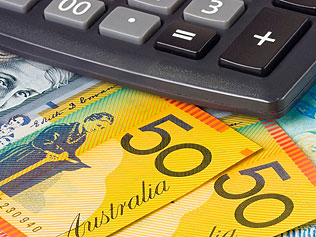Australia’s SME Loan Guarantee Program: What You Need To Know
- Written by a Guest Writer

Small businesses in Australia, that are enterprises with less than 20 workers, account for 35% of Australia’s total gross domestic profit and employ 44% of the country’s workforce. Unfortunately, smaller companies are the most vulnerable to economic hardships due to the coronavirus pandemic. Large global companies tend to either have sufficient cash in reserves or the ability to raise hundreds of millions of dollars at rock bottom rates.
The Australian government is taking the necessary steps in ensuring small businesses can better navigate through the difficult landscape and keep millions of workers employed. The Gov’s SME Loan Guarantee Program will support up to $40 billion of lending to small and medium-sized enterprises, including sole traders and not-for-profit organizations.
The program officially commenced in April 2020 and all loans approved through the end of September 2020 will be covered by the guarantee.
How It Works
The Australian government pledged to guarantee 50% of new loans issued by eligible lenders to SMEs. Doing so will help encourage lenders’ ability to offer credit and funding to navigate through the current economic difficulties and a likely recession to follow.
The government will only guarantee loans that satisfy four terms:
-
* SMEs must have a turnover of no more than $50 million.
-
* The loan amount cannot exceed $250,000 per borrower.
-
* Loans must have a three-year repayment period with an initial six month repayment holiday.
-
* Borrowers do not have to provide an asset as security for the loan.
The Fine Details
SMEs interested in the program will need to speak with their financial institution as well as other firms to shop around for the best deals and terms. The Australian government is not handing out the loans, rather it is working with banks and other entities to ensure a higher amount of loans are available.
SMEs can take advantage of the loans to help with current and upcoming cash flow needs, such as rent and staff expenses.
While the lender will have the final say to extend credit or not, the Australian government is counting on the private sector to factor in the current uncertainty in any decision. In addition, lenders have full authority to determine the interest rate and other fees.
But there are some limits that lenders need to follow. The government is pushing lenders to charge interest to business owners only on the amount of capital drawn, instead of the total capital available. In other words, if the business owner is approved for a $250,000 loan but doesn’t end up using any of the funds, the lender shouldn’t charge any interest or fees whatsoever.
However, lenders will have full authority to use their normal recovery procedures, including taking enforcement action.
How To Shop Around
Some argue that banks in Australia suffer from a very poor reputation as the “big four” combine for nearly 80% of the entire home loan lending market and collected $41 billion in profit. Thankfully, the Government’s program is open to many lenders who aren’t a stuck-up Australian bank.
As an example, Prospa is an online lender with a reputation of offering borrowers one of the easiest and most streamlined application processes. The company is also known for offering excellent customer service.
Other non-bank options for SMEs include Get Capital, Lumi, and On Deck Capital, among others.
What Else Is The Government Doing For SMEs?
Beyond the SME loan program, the Australian government has many other programs to help support business owners. Most notably, the JobKeeper Payment plan offers business owners a fortnightly subsidy of $1,500 per eligible employee.
Other programs include a 15-month investment incentive in which business owners with a turnover of less than $500 million can deduct 50% of the cast of an eligible asset on installation. This should result in business owners retaining an additional $6.7 billion in cash that would have otherwise been paid in taxes.
Conclusion: Economic Outlook Isn’t Encouraging
Australia may have navigated through the health crisis better than many other countries but the economic impact could be devastating. According to some estimates, Australia’s economy is projected to contract by 9% in 2020. Any recovery won’t be seen until the final three months of the year and a return to the pre-coronavirus level of activity isn’t expected until the bottom half of 2022.
If accurate, 2020 could mark the largest contraction in GDP in nine decades.
To say that all SMEs in Australia will survive the coronavirus pandemic would be foolish. Many will unfortunately fail and many more will emerge in much worse shape. The Government’s role in making sure SMEs have access to capital to continue paying the bills ignores one important detail: consumer behavior.
No amount of government intervention, stimulus, loans, or other measures will guarantee consumers return to a “life as normal” mentality once the pandemic is resolved. This might be most evident in the hospitality industry where some restaurant owners think the impact of the health crisis could last for years -- if not forever.
But if one thing holds true, the spirit of the Australian people is unrivaled at the global stage. The population is ready to rally behind their small business owners and do what they can to support the domestic economy as much as possible.




